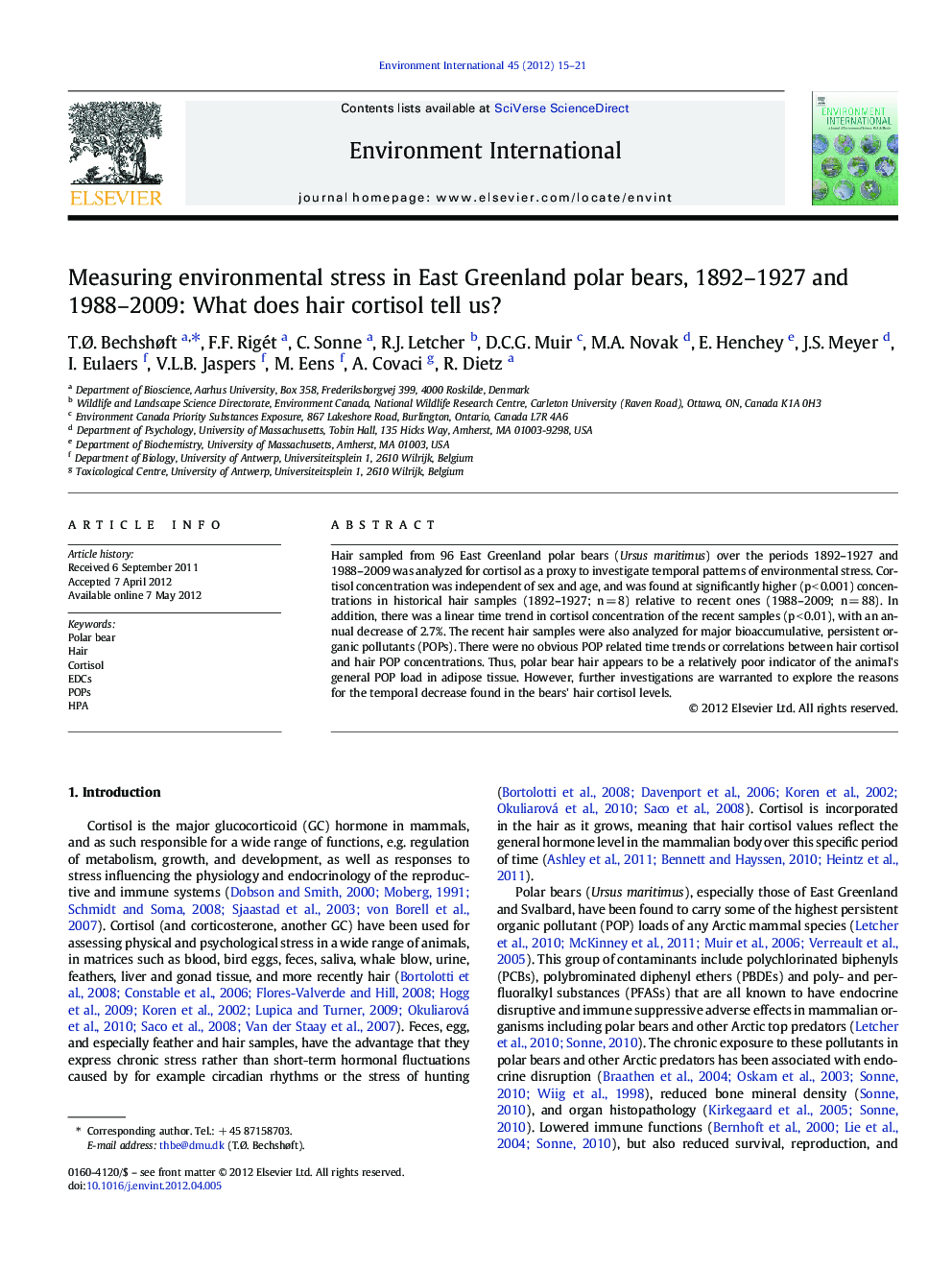| Article ID | Journal | Published Year | Pages | File Type |
|---|---|---|---|---|
| 4423036 | Environment International | 2012 | 7 Pages |
Hair sampled from 96 East Greenland polar bears (Ursus maritimus) over the periods 1892–1927 and 1988–2009 was analyzed for cortisol as a proxy to investigate temporal patterns of environmental stress. Cortisol concentration was independent of sex and age, and was found at significantly higher (p < 0.001) concentrations in historical hair samples (1892–1927; n = 8) relative to recent ones (1988–2009; n = 88). In addition, there was a linear time trend in cortisol concentration of the recent samples (p < 0.01), with an annual decrease of 2.7%. The recent hair samples were also analyzed for major bioaccumulative, persistent organic pollutants (POPs). There were no obvious POP related time trends or correlations between hair cortisol and hair POP concentrations. Thus, polar bear hair appears to be a relatively poor indicator of the animal's general POP load in adipose tissue. However, further investigations are warranted to explore the reasons for the temporal decrease found in the bears' hair cortisol levels.
► We analyzed cortisol in hair from 96 Greenland polar bears (1892–1927 and 1988–2009). ► Cortisol concentration was independent of sex and age. ► Significantly higher cortisol concentration was found in historical samples. ► A linear time trend was found in the recent samples (cortisol decrease of 2.7% p.a.). ► No time trends or correlations in cortisol vs. hair or adipose tissue pollutants
